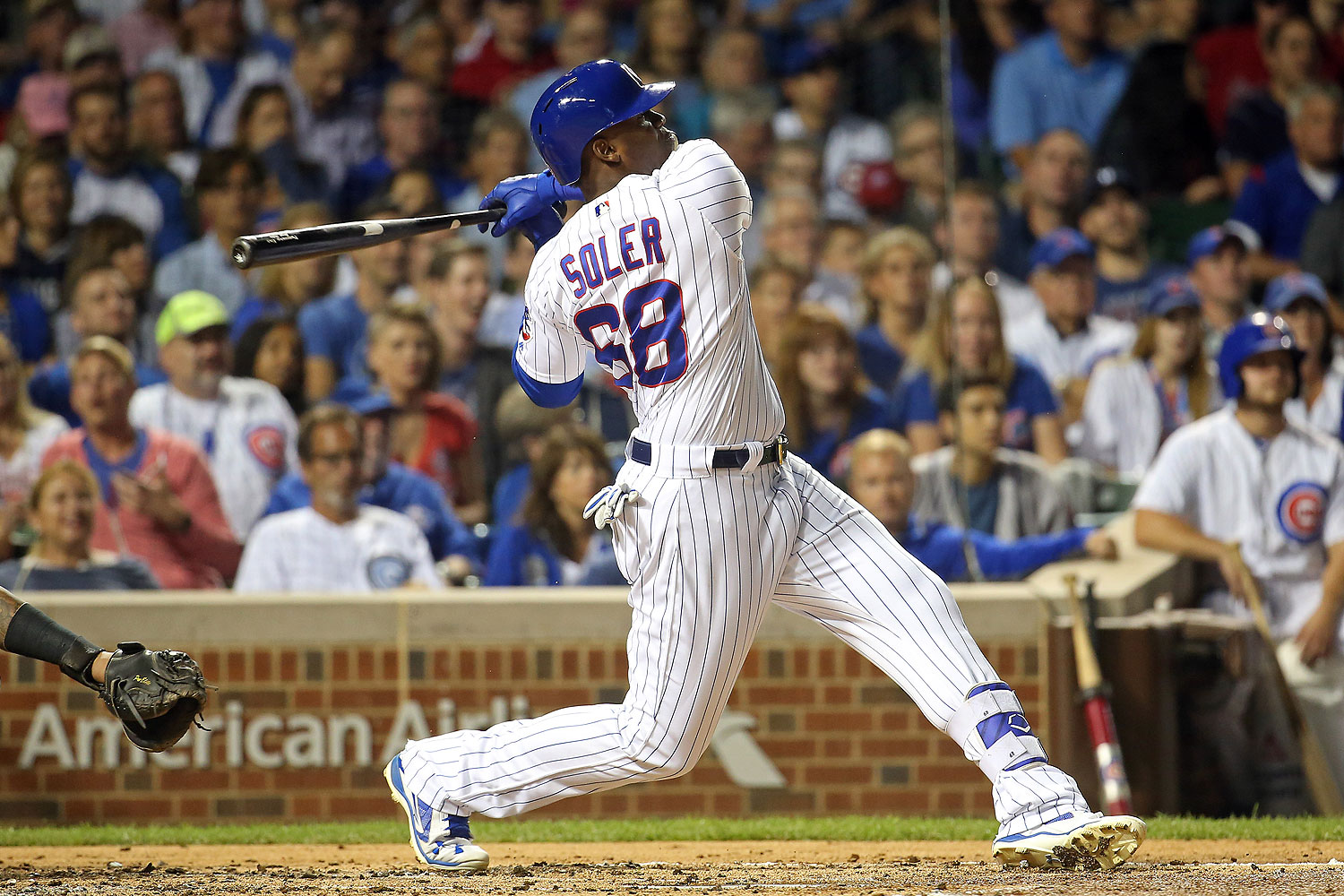In late July, the Cubs neared the trade deadline with their rebuilding process ahead of schedule but with one big hole: a need for a reliably lights-out relief pitcher. They filled it by trading depth for the rental of Aroldis Chapman, one of the best relievers on the market. He would prove instrumental to their World Series run.
They then entered the offseason with the same hole all over again. (Chapman is now rumored to have on his plate deals between $80 million and $92 million after an excellent but lesser closer, Mark Melancon, signed with the Giants with the largest deal ever for a reliever.)
Today the Cubs plugged that hole early, trading less depth for an equally elite but much less expensive hired gun, Wade Davis. The catch? Chapman was as sure a thing as existed on the market, a pitcher with unprecedented velocity and strikeout rates yet a remarkably clean injury history. Davis, meanwhile, is three years older, hit the DL twice last year, and his strikeout rate is in decline.
Strong Relief at a Bargain
In a good breakdown of the trade, Dave Cameron of FanGraphs notes that Davis has had the lowest wOBA—weighted on-base average—among relievers over the past three years, a hair better than Andrew Miller and better than Chapman or Melancon.
On the other hand, there's this: "Davis’ strikeout rate has gone from 39% to 31% to 27% the last three years, and his wOBA allowed is driven in large part by a complete lack of home runs; he’s only given up three in the last three years, thanks to the lowest HR/FB rate in baseball." His velocity fell considerably from 2015 to 2016, about a mile per hour for each pitch, depending on the source.
Davis pitched in the homer-killing environment of Kauffman Stadium in Kansas City, fourth-best in baseball from the pitcher's perspective. But Wrigley's still advantageous for him, seventh-best in baseball and one of 12 parks that favor pitchers.
Pitcher-friendly confines helped keep his ERA freakishly low: 1.00 in 2014, 0.94 in 2015, and 1.87 in 2016. The advanced statistics don't like him as much: his FIP (fielding-independent pitching) those years has been 1.19, 2.29, and 2.29, and his xFIP (expected FIP) has been 1.93, 3.07, and 3.68.
But he wasn’t—and won’t be—pitching without a defense. With the Royals, he was in front of one of the best defensive teams in baseball history; with the Cubs, he'll be pitching in front of a comparably good one, and a better one than the 2016 Royals. If Davis stays healthy, he could be one of the best relievers in baseball again, at a lower price than his peers are going for.
So Long, Soler
Going the other way is Jorge Soler. The advantage to Soler? He's cheap. He's very cheap. Soler will make $4.7 million next year, and the mediocre platoon outfielder the Cubs have ostensibly replaced him with, Jon Jay, cost $8 million for one year. Even if Soler opts into arbitration after next year, he's likely to be pretty affordable unless he makes the leap people have been waiting for.
And Soler has shown some mild signs of life. He raised his walk rate, lowered his strikeout rate, and increased his power from 2015 to 2016. Given a full season and modest improvement, it's not unreasonable to think that Soler could be a two-win player. But not given a full season, Soler wasn't going to have that value with the Cubs. "The Cubs should capitalize on whatever he still possesses of his prospect-ish trade value, take what they can get for him, and move forward," Craig Edwards wrote a few days ago at FanGraphs. What they got was one of the best relievers in baseball for a full season for a platoon outfielder, even if Soler could be something more than that somewhere else.



